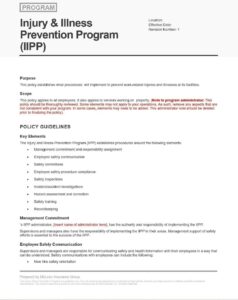Utilizing a pre-designed form offers several advantages. It simplifies the process for employees, reducing the time and effort required to communicate their absence. For employers, such forms streamline record-keeping, minimize discrepancies in information received, and contribute to more efficient absence management. Clear communication fostered by standardized forms can prevent misunderstandings and promote a smoother workflow during employee absences.
This article further explores the practical applications of these forms, including best practices for design and implementation, legal considerations, and strategies for integrating them into existing HR systems. Examples and case studies will demonstrate how effective absence management contributes to a healthier and more productive work environment.
Key Components of a Sick Leave Notification Form
Effective absence management relies on clear communication. A well-designed form ensures essential information is consistently captured, facilitating efficient processing and record-keeping. The following components contribute to a comprehensive and functional document:
1. Employee Information: Full legal name, employee ID, department, and job title ensure accurate identification and facilitate efficient routing.
2. Contact Information: A current phone number and email address enable supervisors to maintain contact during the absence and address urgent matters.
3. Dates of Absence: Start and end dates of the sick leave period provide a clear timeframe for absence tracking and workload management.
4. Reason for Absence: A brief explanation of the illness, while respecting employee privacy, can assist in determining appropriate support and return-to-work strategies. Specificity, where appropriate and comfortable for the employee, can be helpful for tracking patterns and addressing potential workplace health concerns (e.g., contagious illnesses).
5. Supervisor Information: Name and contact details of the direct supervisor ensure proper notification and facilitate internal communication.
6. Signature Lines: Designated spaces for employee and supervisor signatures formalize the request and acknowledge receipt. Digital signatures can streamline this process in electronic systems.
7. Date of Request: Recording the date the form was submitted ensures accurate record-keeping and helps track response times.
Incorporating these elements promotes efficient processing, reduces ambiguity, and ensures all necessary information is readily available. A standardized format simplifies absence tracking and helps maintain compliance with company policies and relevant regulations. This contributes to a smoother workflow and better supports both employees and employers during periods of illness.
How to Create a Sick Leave Request Template
Developing a standardized sick leave request form involves several key considerations to ensure clarity, completeness, and compliance with relevant regulations and company policies. A well-designed template simplifies absence reporting for employees and streamlines record-keeping for employers.
1: Define Required Information: Determine the essential data points to be collected, such as employee identification, contact information, dates of absence, reason for leave, and supervisor details. Consider any specific legal or company requirements for documentation.
2: Choose a Format: Select a format suitable for the organization’s needs. Options include digital forms (fillable PDFs, online platforms), word processing documents, or spreadsheets. Digital formats often offer advantages in terms of accessibility, automated routing, and data analysis.
3: Design the Template: Structure the form logically, grouping related information clearly. Use concise labels and provide clear instructions. Ensure sufficient space for entries and consider incorporating drop-down menus or checkboxes for standardized responses where appropriate.
4: Implement Clear Instructions: Provide clear guidance on how to complete and submit the form. This might include specifying submission deadlines, designated recipients, and acceptable methods of submission (e.g., email, online platform, physical delivery).
5: Integrate with Existing Systems: Align the template with existing HR systems and processes to streamline data entry, tracking, and reporting. This might involve integrating with payroll systems or absence management software.
6: Review and Test: Before widespread implementation, pilot test the template with a representative group of employees and supervisors to gather feedback and identify any necessary revisions. Ensure the form is user-friendly and effectively captures the required information.
7: Communicate and Train: Communicate the new procedure clearly to all employees and provide training on how to use the template correctly. Make the template readily accessible and provide clear points of contact for questions or support.
8: Regularly Review and Update: Periodically review the template and update as needed to ensure continued effectiveness and compliance with evolving regulations and company policies. Gather feedback from users to identify areas for improvement and streamline the process.
A comprehensive and user-friendly sick leave request template provides a structured framework for managing employee absences. This contributes to accurate record-keeping, streamlined workflows, and improved communication between employees and employers.
Standardized forms for notifying employers of employee illness serve as a vital tool for managing absences effectively and ensuring compliance with relevant regulations and company policies. A well-designed template streamlines communication, simplifies record-keeping, and promotes transparency between employees and employers. Careful consideration of key components, format selection, integration with existing systems, and clear communication of procedures contribute to the overall efficacy of these tools.
Organizations committed to fostering a healthy and productive work environment should prioritize the implementation of clear and accessible absence reporting mechanisms. Regular review and adaptation of these procedures, informed by evolving best practices and regulatory changes, will contribute to sustained effectiveness and ensure ongoing support for both employee well-being and organizational success.
